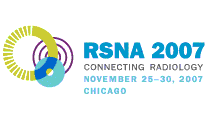
Abstract Archives of the RSNA, 2007
Shermian Antoinette Woodhouse MD, Presenter: Nothing to Disclose
Skin and soft tissue changes, common toxicities of breast radiotherapy, can impact patients’ quality of life. Improvements in detecting and treating skin toxicity can be made only if the changes can be accurately and quantitatively assessed. Currently, cosmetic evaluation is based largely on subjective scales. We investigated two complementary non-invasive techniques, spectrophotometry and ultrasound tissue characterization, (UTC) to assess quantitatively radiation-induced breast tissue changes across various skin tones.
A Mexameter MX® was used to measure erythema and melanin levels at the skin surface and an Ultrasonix® ultrasound scanner (with 14MHz probe) was utilized to measure the soft tissue changes of the breast - skin thickness and tissue microstructure, such as stiffness. With each device, readings were done at the 12, 3, 6, and 9 o’clock axis of both breasts and at the tumor bed with the untreated breast serving as the control. Clinical assessment of toxicity was done via the RTOG skin and soft tissue toxicity scales and QOL surveys. All patients received a standard course of whole breast radiation of 50-50.4Gy followed by a boost of 10-16Gy to the tumor bed. Twenty patients are enrolled to date. Six were evaluated longitudinally - pre, during and post-radiation therapy. Fourteen were evaluated post-treatment. Mean follow-up was 22 months (6 - 94 months).
Both techniques were able to quantify the extent of difference between the treated and untreated breast. The Mexameter was consistent in longitudinally assessing changes in skin color (erythema and melanin) in each patient both during and after treatment (Figure). Average increase of erythema and melanin post-RT were 28% and 21% respectively. UTC showed progressive changes during treatment but was better at showing post-treatment sub-dermal and soft tissue injury. Average skin thickness increased from 1.7mm to 2.5mm post RT. The Mexameter and UTC provided additional information in identifying and measuring skin and soft tissue changes compared to the RTOG toxicity scales alone. The acute RTOG skin toxicity scale does not account for changes in hyperpigmentation (melanin levels), a significant occurrence during treatment
The combination of Mexameter and UTC represents an efficient and effective means of assessing acute and chronic skin and soft tissue injury from breast radiotherapy. The techniques will allow objective assessment of RT-induced skin and soft tissue toxicity as we develop strategies to improve the cosmetic outcome and QOL after radiotherapy for breast cancer.
Woodhouse, S,
The Use of Spectrophotometry and Ultrasonic Tissue Characterization Techniques in the Quantitative Assessment of Acute and Chronic Radiation Effects in Breast Tissue. Radiological Society of North America 2007 Scientific Assembly and Annual Meeting, November 25 - November 30, 2007 ,Chicago IL.
http://archive.rsna.org/2007/6001722.html

